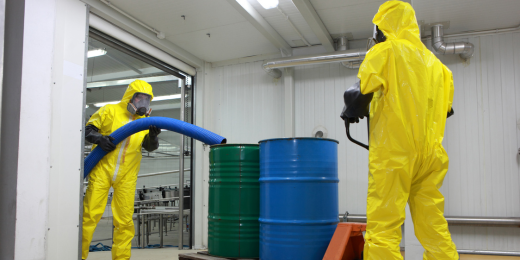The Best Strategy To Use For Reclaim Waste
The Best Strategy To Use For Reclaim Waste
Blog Article
Some Of Reclaim Waste
Table of ContentsThe Single Strategy To Use For Reclaim WasteTop Guidelines Of Reclaim WasteNot known Incorrect Statements About Reclaim Waste Reclaim Waste Fundamentals ExplainedThe Greatest Guide To Reclaim Waste
Residential sewer waste refers to the waste and products from a residential septic container. The proper administration and disposal of residential sewage waste call for liquid waste to be moved to a sewage therapy plant where the appropriate methods and equipment are applied to cleanse and dispose of waste.
Industrial waste usually includes potential risks, such as combustible materials or a blend of liquid and strong waste items, and needs an extra sophisticated and in-depth disposal procedure. The disposal of commercial waste typically involves the filtering of waste before transport to ensure risk-free and correct disposal. Industrial waste is developed from results and overflow of commercial procedures and production.
This type of waste can not use the same sewage administration transport or processes as septic or business liquids. The hazardous waste management process requires the inspection and testing of fluid waste prior to it undergoes the disposal procedure (liquid waste disposal melbourne). Overflow waste is the liquid waste that originates from drainage and excess stormwater in extremely populated areas or cities
Runoff waste can cause contamination and flooding if not taken care of properly. Find out more about drain cleansing and waste management. Making sure proper waste management can avoid calamities and reduce environmental harm. Both people in domestic setups and professionals in commercial or production markets can gain from understanding the processes and laws of liquid waste management.
Little Known Questions About Reclaim Waste.
Call PROS Providers today to find out about our waste administration and disposal solutions and the correct means to take care of the liquid waste you create.
(https://penzu.com/p/1f225eb6893bd9aa)Do you understand what happens to your water when you end, flush the toilet or drain the washing maker? No? Well, it deserves recognizing. This so-called 'wastewater' is not only a crucial resource however, after therapy, will be launched to our land, rivers or the sea. Utilized water from toilets, showers, bathrooms, kitchen sinks, washings and industrial procedures is referred to as wastewater.

water utilized to cool equipment or clean plant and devices). Stormwater, a kind of wastewater, is overflow that flows from farming and metropolitan locations such as roofings, parks, gardens, roadways, paths and gutters right into stormwater drains, after rainfall. Stormwater flows unattended directly to local creeks or rivers, eventually getting to the ocean.
Top Guidelines Of Reclaim Waste
In Queensland, most wastewater is dealt with at sewage therapy plants. Wastewater is delivered from domestic or commercial sites through a system of sewers and pump stations, referred to as sewerage reticulation, to a sewer therapy plant. Regional governments develop, keep and run most sewage treatment plants. Operators are licensed under the Environmental Management Act 1994 to discharge treated wastewater at an acceptable environmental standard into rivers.
The Department of Natural Resources suggests article neighborhood governments regarding handling, operating and maintaining sewerage systems and treatment plants. In unsewered locations, local governments might need homeowners to set up private or home sewer treatment systems to treat residential wastewater from toilets, cooking areas, restrooms and laundries. The Department of Natural Resources authorises making use of home systems when they are verified to be effective.
In some brand-new neighborhoods, treatment of some stormwater to eliminate litter, sand and crushed rock has started using gross toxin traps. Wastewater treatment happens in 4 stages: Removes strong issue.
Wastewater after that moves right into big storage tanks where solids resolve and are removed as sludge. Oil and scum are skimmed from the surface area. Utilizes tiny living microorganisms called micro-organisms to break down and remove staying dissolved wastes and great particles. Micro-organisms and wastes are included in the sludge. Removes nitrogen and phosphorus nutrients that can cause algal blossoms in our rivers and threaten water life.
Some Ideas on Reclaim Waste You Should Know
Nutrient elimination is not offered at all sewage treatment plants because it requires expensive specialised tools. Clear fluid effluent created after treatment may still have disease-causing micro-organisms - liquid waste removal.

Most wastewater streams into the sewerage system. Under the Act, local federal governments administer authorizations and licences for environmentally appropriate tasks (Ages) entailing wastewater releases that could have a regional impact.
See This Report about Reclaim Waste
Otherwise, examples are considered laboratory evaluation. Typically several tests are needed to develop the degrees of each of the various pollutants such as oils, heavy metals and chemicals in water. Surveillance gives accurate info regarding water quality and can confirm that licence problems are being met. The info gotten via surveillance gives the basis for making water quality choices.
Report this page